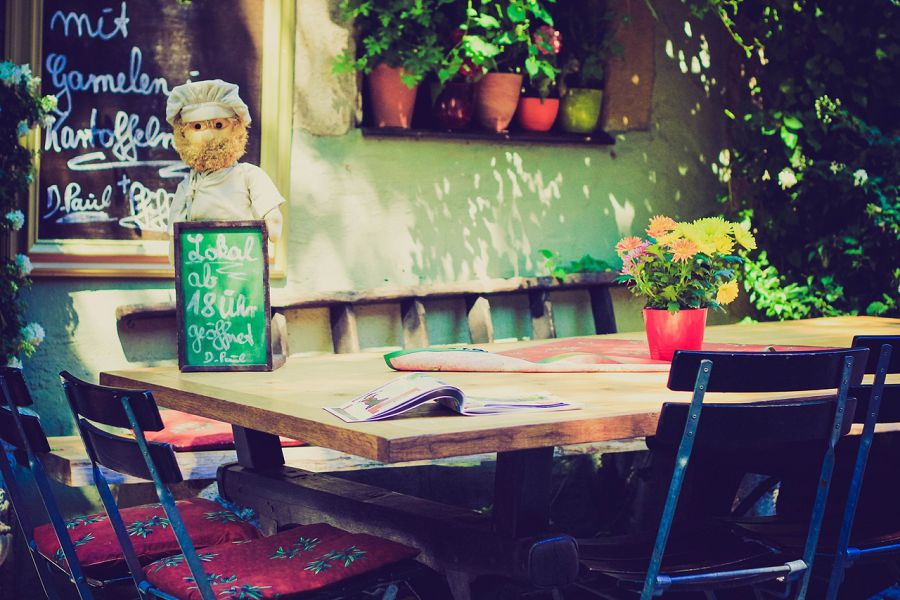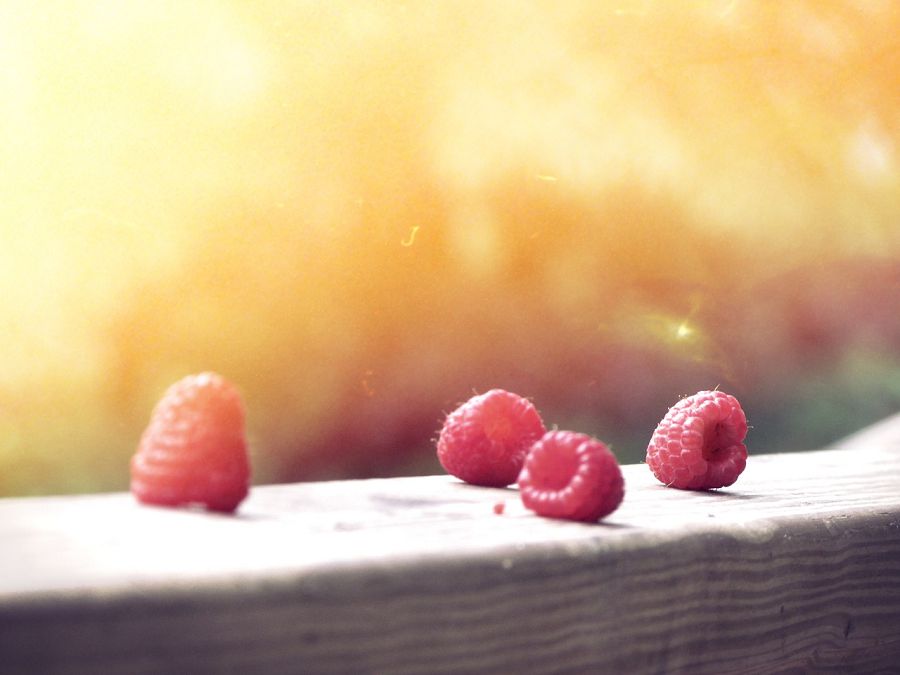
Lowered light levels can often be dealt with simply by upping the ISO setting, but consider first whether the scene should actually look darker than average. As rain begins to pelt down from darkgrey clouds, you can best preserve the sensation by making sure that the clouds and everything else are indeed dark in the image, and not try to brighten them to make it look as if it's not such a bad day.
Dark sky, bright foreground
Quite the opposite happens if the sun breaks through to light up the foreground or middle ground, and the contrast shoots up between lit landscape and dark sky. This combination is always dramatic, and order to capture it you should avoid over-exposure at all costs. Dark skies can radically alter the lighting of a picture, not just in landscape photography. A facade of a building suddenly illuminated by the sun against a dark sky can look very dramatic indeed,as can a mountain ridge suddenly highlighted in otherwise gloomy conditions, or a field of rice glowing bright green against a dark grey backdrop. You might encounter these conditions spontaneously, but you may also have to wait. You may also have to run so that you are in the right place at the right time — before the sun goes in again. And again you might consider bracketing so as not to lose the moment.
Exposure Considerations
All cameras use automatic exposure by default, and the simpler ones offer few possibilities to over- ride this. Nevertheless, automatic exposure systems are not yet content-aware, and any unfamiliar light- ing conditions call for judgment. The saving grace with digital photography retouch is that you have some lat- itude when processing the image, with the possibilities for recovering mistakes, as we show in the At Home section. Nevertheless, three basic considerations will get you through most exposure issues to do with lighting.
First, how bright or dark should the scene be? This may not seem obvious until you come across certain conditions, like snow, a bright sandy beach or a village nestled in a valley at dusk, as the lights begin to come on. lust remember that the cameras exposure system will always try to give you an av- erage mid-tone. While this perfectly suits most scenes, it would render a snowscape a dirty grey, a bright tropical beach too dark, and fading dusk unnaturally light.
Let's start with everyone’s favourite, the warm, raking light from a low sun, either within the first two Most of the land mass and 90 percent of the population are in the northern hemisphere, which accounts for our one-sided view of how the sun appears to move in the sky — that is, left to right and mainly from the south. Not so, however, in Australasia, southern Africa and the south of South America, where everything, including the seasons, is reversed. Photographing sunrises trains you to anticipate where the disc will appear, but in the southern hemisphere it will rise to the left of the pre-dawn glow, not the right. For anyone planning where the sun will be at a particular time of day, this is criicial. The sun’s path is from right to left, and in the northern part of the sky. The same applies, of course, if you are shooting the stars at night, and the constellations are different.
With the co-operation of weather (by no means guaranteed, the time of day has an extraordinary effect on light and images. Provided that you are not rushing at breakneck speed through one destination after another, this is the lighting variable that can offer you the greatest measure of control.Being patient is a kind of passive control, but by learning to anticipate the angle and colour of light that will best suit a scene, you are able to plan a day’s shooting during which you extract the maximum creative effect for your landscapes and shots of people, buildings and monuments.
The sun’s passage through the sky has a major effect on the quality of light, in particular the angle at which the light falls on a scene, and the resulting shadows it casts. All this assumes that there is sulficient sunlight to cast those all-important shadows. Shadows are important in so much travel photography because they enhance texture, bring contrast of tone and even colour. Under a clear sky, they will be more blue than the sunlit areas, and this can be particularly pleasing early and late in the day. hours of morning daylight or the last two of the afternoon (the period of time is shorter in the tropics where the sun rises and sets almost vertically, longer in higher latitudes where its angle of ascent and descent is more gradual).
Some photographers call it “golden” light. It’s great for landscapes because its raking angle heightens texture and throws longer shadows, and it's good for tallish subjects like people and buildings because it lights one side fully. The deep warmth of the light is also attractive, although this is something you can enhance or moderate easily during processing.

There are four major ingredients go into making a successful travel photograph: location, timing, composition and lighting. Of these, the last is the real variable and the least predictable. It also makes a powerful difference to an image. You can research and choose the location, improve on your photogapher’s skills at timing and composing, but the lighting is just how you find it. For all travel photography other than night-time and interiors, it is completely weather dependent. Certainly, you can make weather predictions, and choose to visit destinations at the times of year that should deliver the kind of lighting you would prefer, and in the pages that follow we show how to set about this. But ultimately, for most of the time, you will be dealing with a variety of light that is not of your choosing. The only control available is to wait. And for travellers who need to move on to the next destination, this choice is limited.
To improve your photo apperance, you may check our professional photo retouching services.
If you have two or three days in one place, then for an important picture you can and should consider the time of day that would show the subject to its best effect. This works only when the weather is predictable, but you should also consider working with a variety of climatic conditions, rather than struggling against them.
To get the most from any situation, you need to be able to realise the potential of any type of lighting, be it a misty morning, stark midday tropical sunlight, the soft glow of dusk, or even the unpromising, shadowless light from a heavy overcast sky.
Of course a flash and various kinds of reflectors can help, but it is always best to work with natural light. All light can be put to good use, and knowing how to make the best of any given condition will greatly improve the flow of your photography on the journey.
Light and Geography
Natural light is affected by a host of conditions and variables: where on the planet you are, what latitude and height above sea level, distance from the sea or from mountains. Geography affects the weather, and weather affects the light. Nothing is settled and the variables are infinite. There are even micro-climates that make the light in a short stretch of coastline and other confined areas different from the surroundings, such as in northern California and Oregon, for example. But the broad geographical picture, drawn by a mixture of the latitude, moisture, and altitude, is covered by the following eight divisions.
Temperate
Lying in the middle latitudes between the tropics and the poles, and referring to most of Europe and North America, this regions climate is extreme only in the centre of large continents. It has the lighting conditions for which cameras and their sensors are designed. That means a variety of cloud cover, often daily, a range of seasons with summer days up to twice as long as winter days, but with the sun never really low or high.
For more photographer guide and tips, come back to quickretouch often. We offer fast online retouching services under cost effective solution.

Photography is a way of looking at the world, and everybody looks at the world differently. Each of us has a visual and emotional point of view, just as we have an intellectual point of view. These are responses to the world before us, and photography is one of the best ways in which we can express them.
In the beginning, of course, there was light. Wlithout light there is no tone, no hue, no shadows, no difierentiation between skin, hair or eye colour. Light depends on the time of day, geographical location and the weather. It is transient, illusive, magical, and to chase it and capture it is one of the pleasures of the travelling hunter photographer. How light afiects photography is described in the chapter on Light.
Light also reveals shape and form, the relationship between man and nature, how the world falls into place, No matter artificial light or natural light. Our eyes are astonishingly complex. For a start, there are two of them, so we never see the world from a single viewpoint. We can take in a whole scenes at a glance, or we can focus on a single object or person. We have learned from nature to understand what is beautiful nature invariably gets it right, composing itself into hillsides, woodland and seascapes. Onto this man has added his hand, often trying his best to work with nature, to be sympathetic to the surroundings. A good photograph must take account of the juxtaposition of elements in a scene, and put them together in such a way that it is pleasing or interesting to the eye. There are some tricks to this, which are explained in the chapter on Composition.
A camera may not see in exactly the same way that we do, but it gets pretty close. A photographer needs to know its possibilities and its limitations, and how it can serve his or her point of view. This is explored in the chapter on The Camera.




